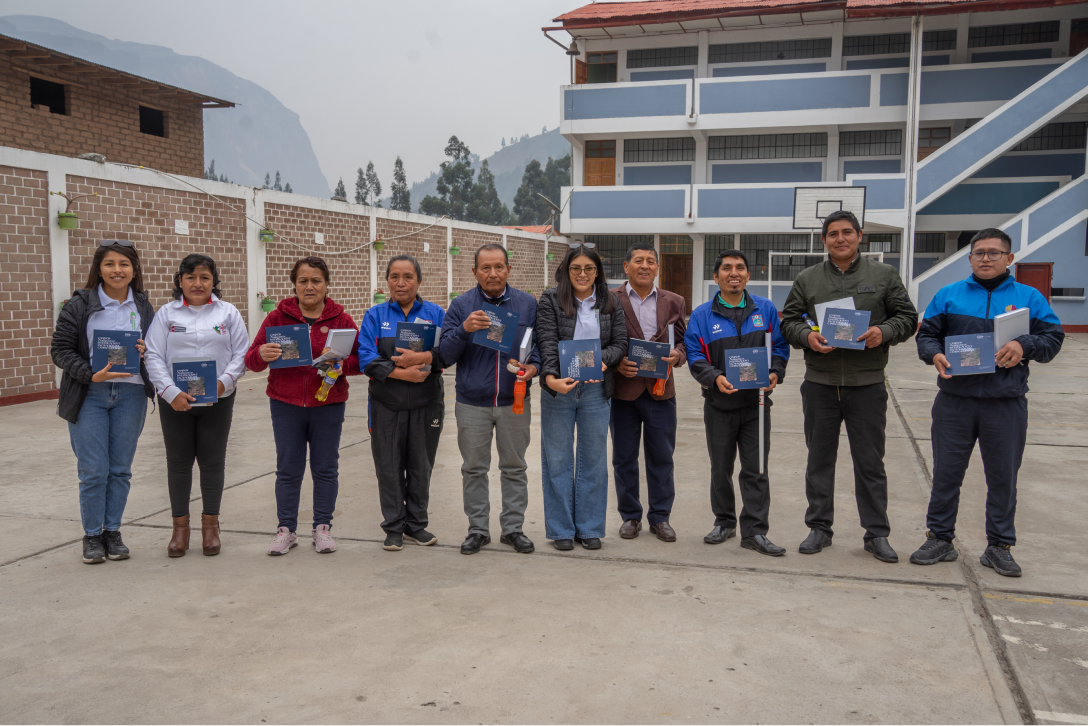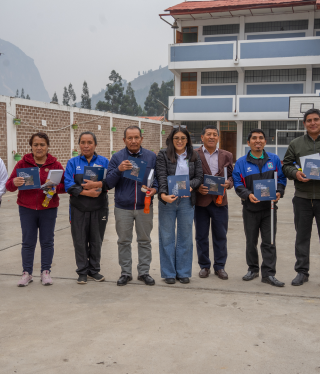News
07 Oct 2024
Celepsa presents a book about the pre-Hispanic history of the Liquiyacu Trail, an ancestral route of cultural connection.


- On September 26 and 27, the book documenting the Archaeological Rescue Project of the Liquiyacu Trail was delivered to various authorities, municipalities, and educational institutions in Huánuco. This pre-Hispanic discovery was uncovered during the construction of Celepsa Renovables' Marañón Hydroelectric Plant.
Huánuco, October 2024. – The Liquiyacu Trail, an ancestral route that remained hidden for centuries under vegetation and debris, was discovered in 2016 during archaeological supervision as part of the construction process of the intake canal for the Marañón Hydroelectric Plant.
This discovery took place near the Licayacu Bridge, now known as the Marañón Bridge, and its archaeological rescue was necessary to allow the continuation of the construction works. The trail, which had been fragmented by modern paths, was identified as a pre-Hispanic route that connected various cultural regions in the Huánuco area.
The company officially delivered the book Pre-Hispanic Trails: Research and Excavation of the Liquiyacu Trail to the Ministry of Culture and the National Library of Peru. Additionally, the book was recently provided to various municipalities and local schools. This publication is the result of meticulous research and archaeological excavation carried out during the construction of the Marañón Hydroelectric Plant, a project led by Hidromarañón SRL, now Celepsa Renovables, a subsidiary of Celepsa.
The book documents the discoveries made during the Archaeological Rescue Project of the Liquiyacu Trail and provides a detailed overview of the excavation process and the cultural significance of this route. The work is structured into five parts, covering topics ranging from the historical background of the region to the technical details of the archaeological rescue. In its early sections, the text presents an analysis of pre-Hispanic roads in general, with a special focus on the Qhapaq Ñan, the vast network of roads that connected territories within the Tahuantinsuyo, and how these influenced the configuration of local routes.
One of the most notable aspects of the book is the methodology used to document the trail, with a focus on the conservation and protection of cultural heritage. The study includes an analysis of the trail's construction features, such as the presence of stairways and retaining walls in steep areas. These details confirm the significance of this route for pre-Hispanic societies that used it to travel between different ecological and cultural zones.
In addition to the archaeological aspects, the book also highlights the Marañón Hydroelectric Plant's commitment to the preservation and promotion of Huánuco's cultural heritage. The company has worked closely with the Ministry of Culture to ensure that the archaeological discoveries in the area are properly documented and protected, thus complying with the current regulations regarding cultural heritage.
The delivery of the book to the municipalities and schools of Huánuco aims to foster knowledge and appreciation for the region's cultural legacy. It will serve as an educational tool for students and local authorities, enabling them to better understand the significance of pre-Hispanic history and its connection to the territory they inhabit.
The Liquiyacu Trail is an example of the numerous pre-Hispanic remnants that can still be discovered in Peru, and this project has highlighted the cultural richness that lies hidden in many regions of the country. The research not only contributes to archaeological knowledge but also strengthens the link between archaeology and the development of modern infrastructure.
The company reaffirms its commitment to sustainable development and respect for cultural heritage, thereby contributing to the strengthening of regional identity.
About Celepsa
Celepsa, part of the UNACEM Group, is a company engaged in the marketing and generation of clean energy, as well as providing sustainable energy solutions. Its purpose is to transform energy into solutions that build trust, enhance value, and promote sustainability. United, we grow to build a sustainable world.
It began operations in 2010 and has two state-of-the-art hydroelectric plants in its portfolio: El Platanal and Marañón, as well as a natural gas thermal power plant, Santo Domingo de los Olleros. The latter was acquired in 2023 and is a dual-cycle power generator located in Chilca, Cañete.
With origins in Peru and international projection, its main function is to manage natural resources responsibly to contribute its full energy potential to the National Interconnected Electric System (SEIN).
